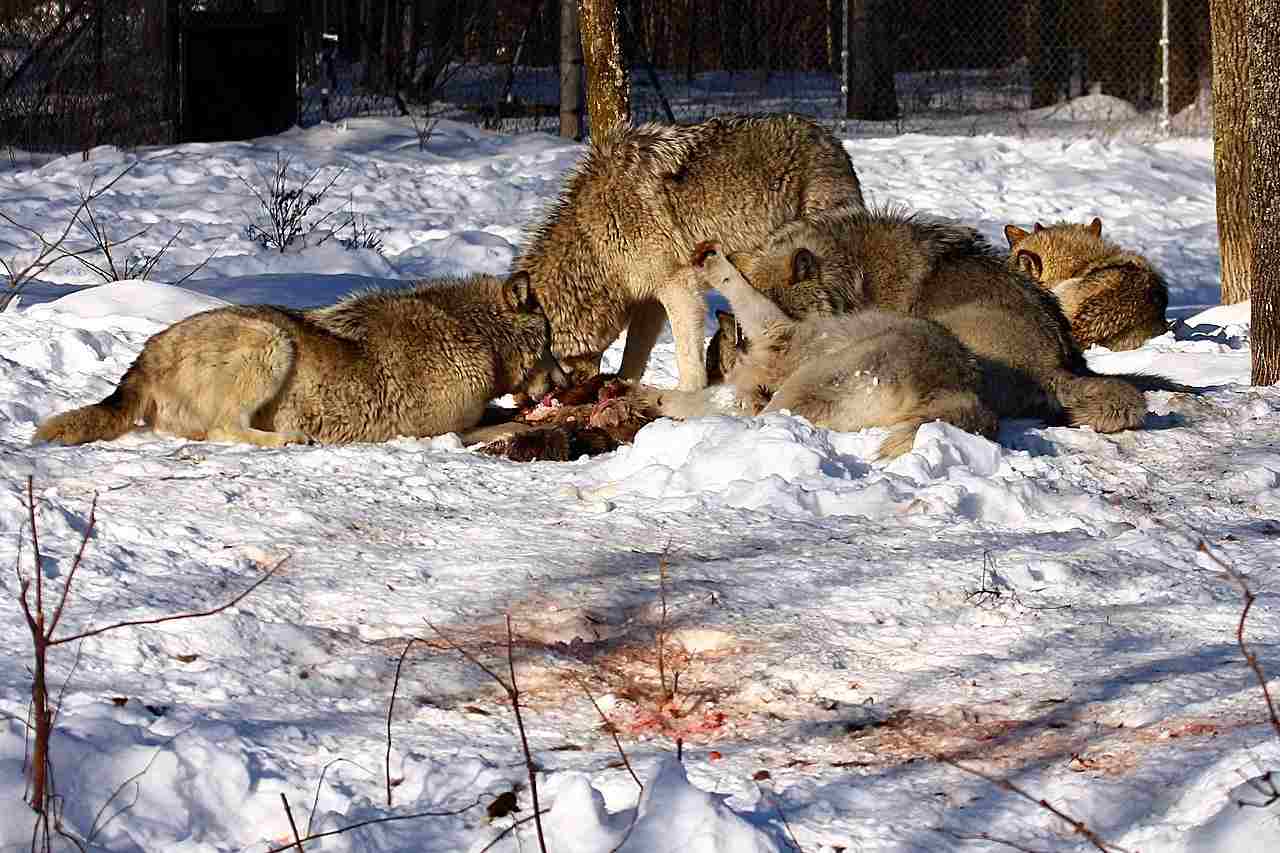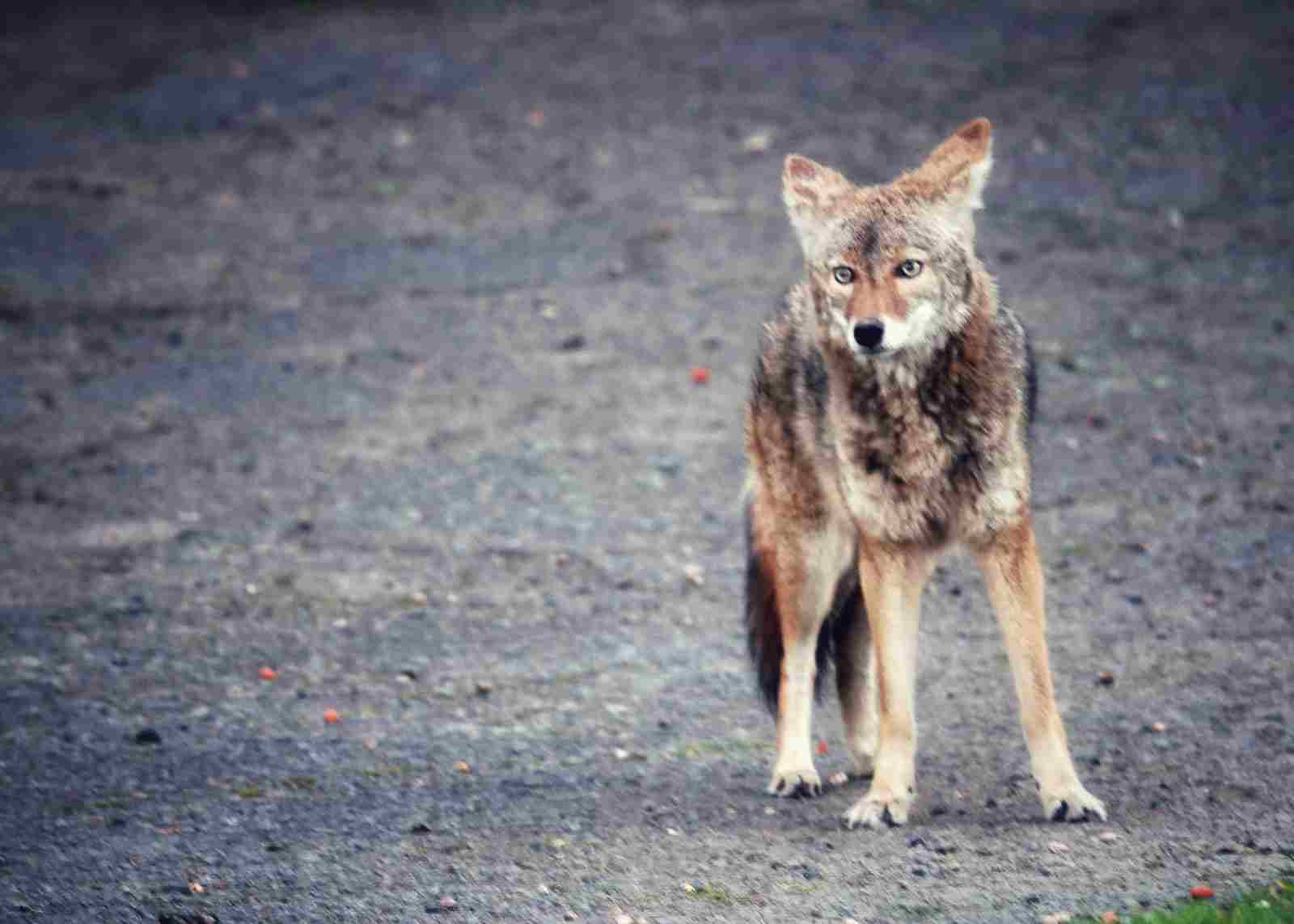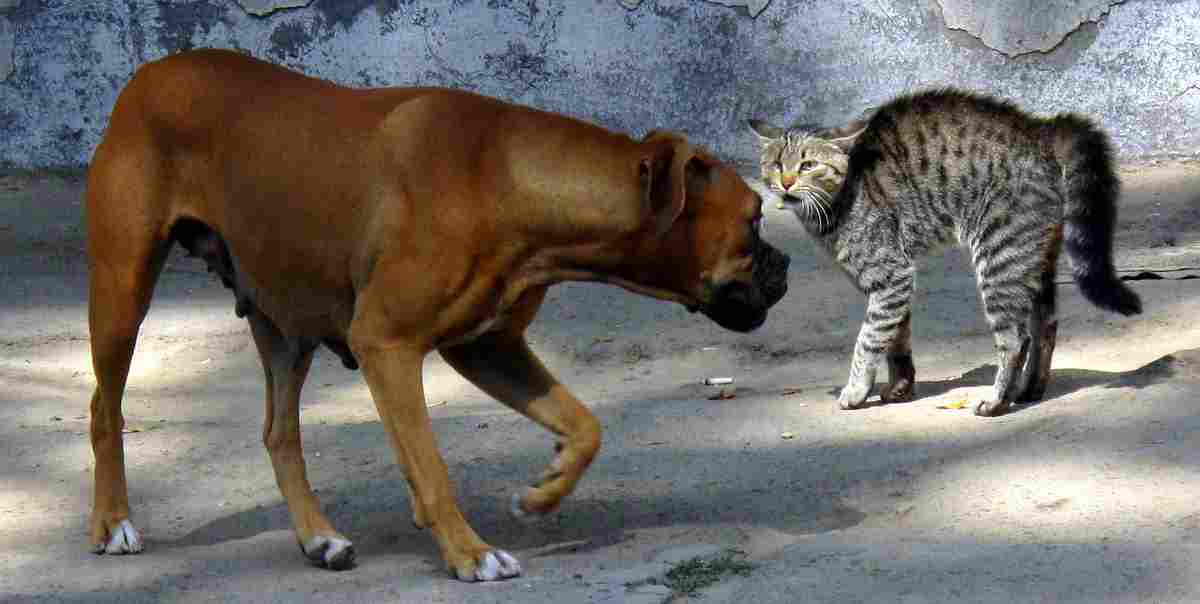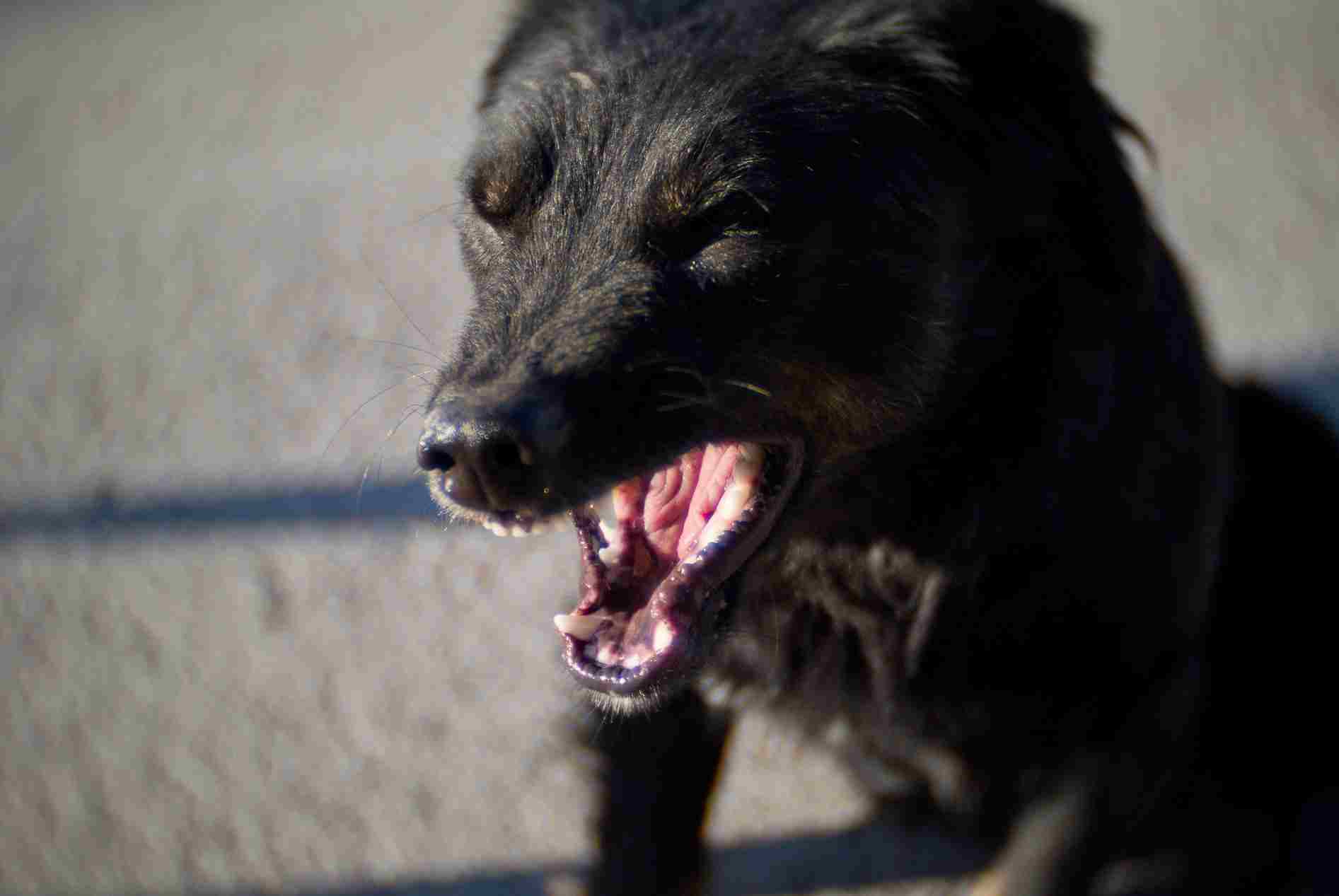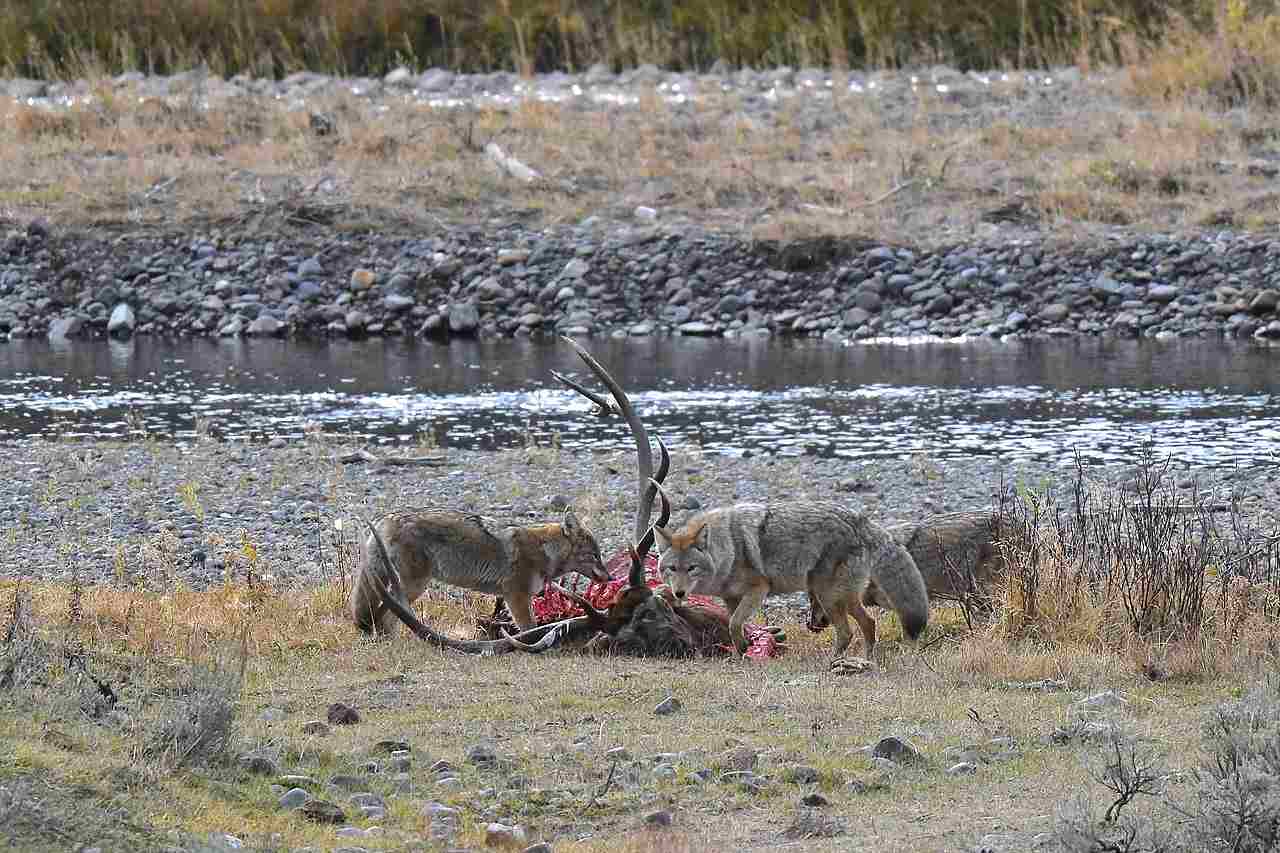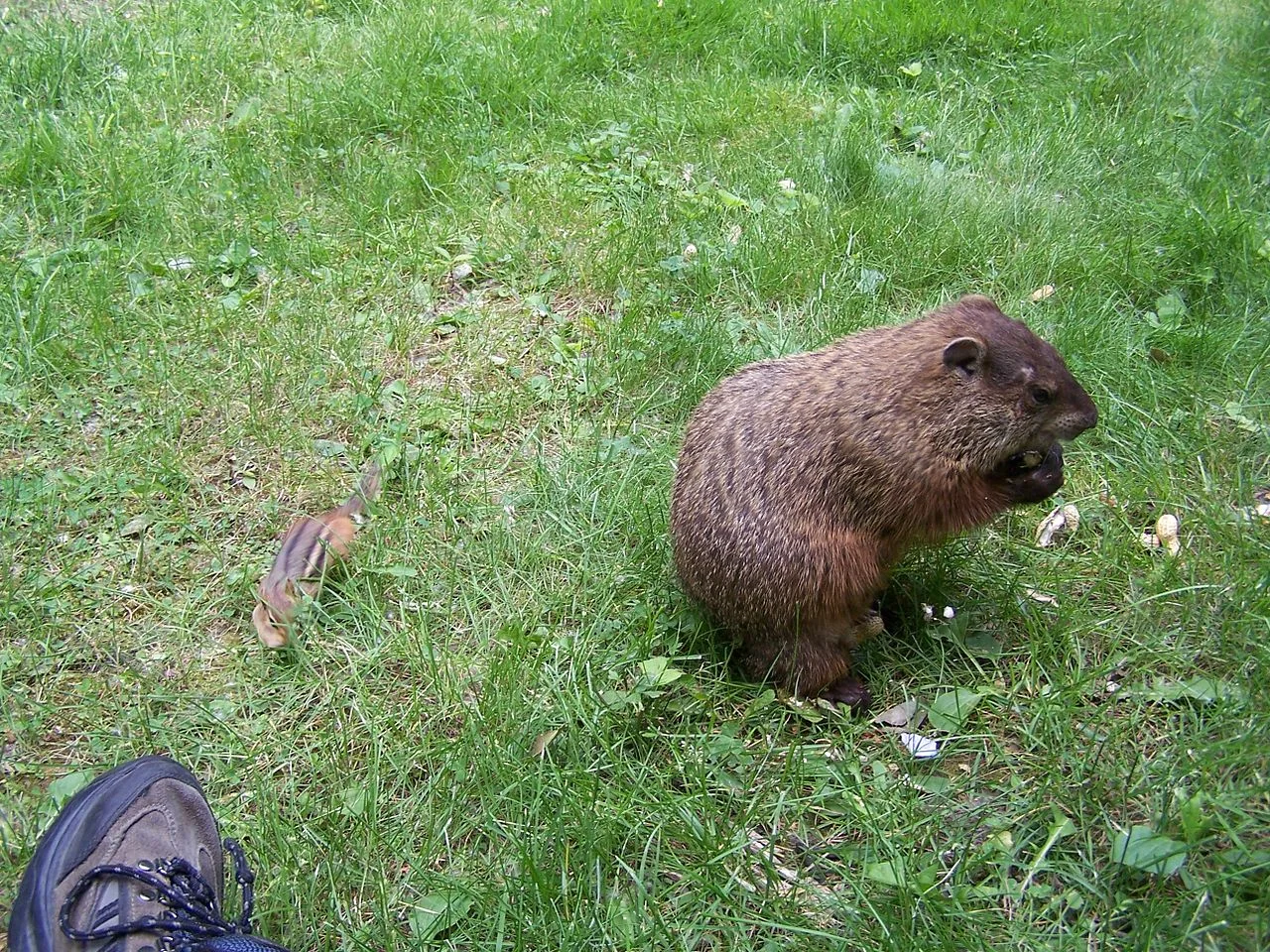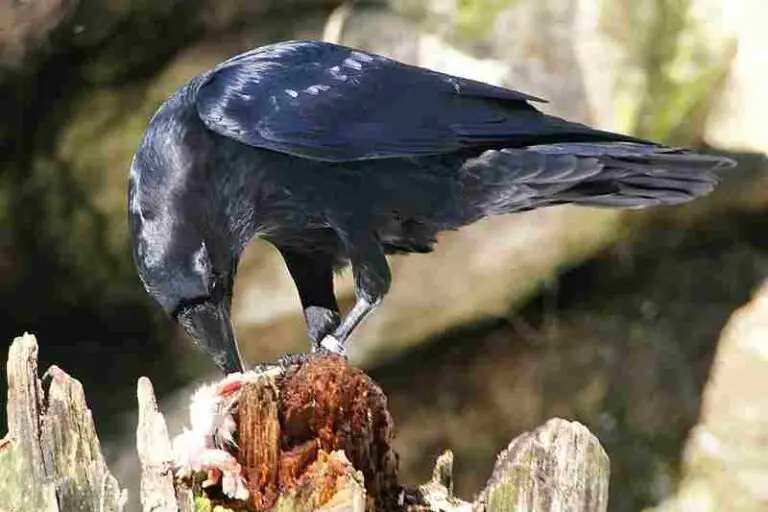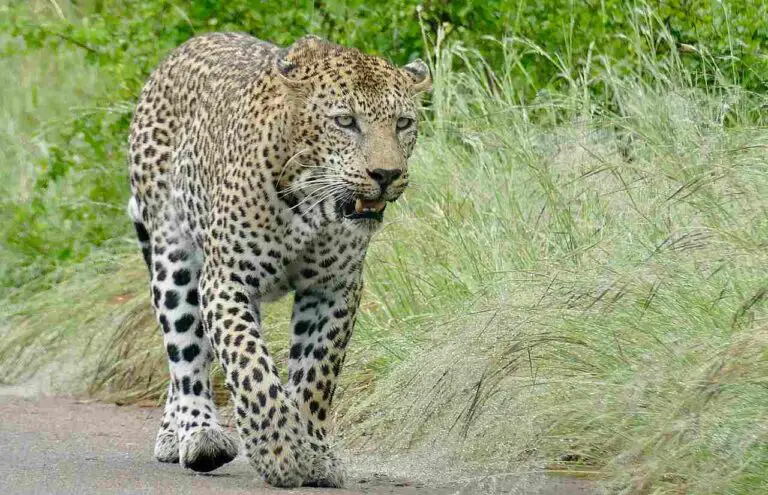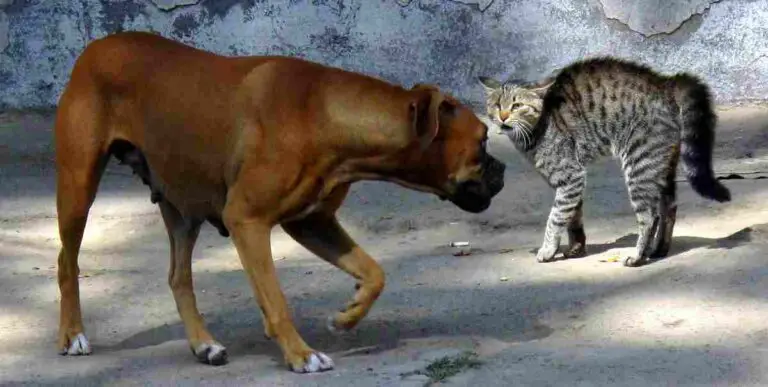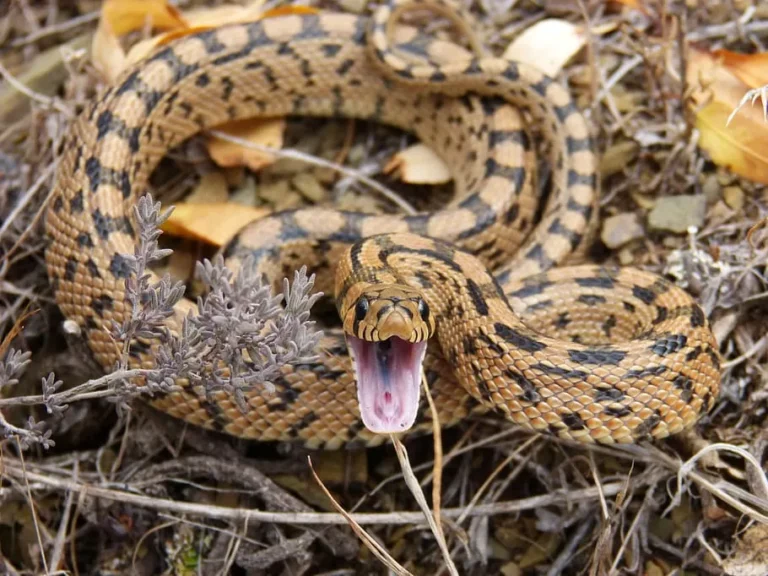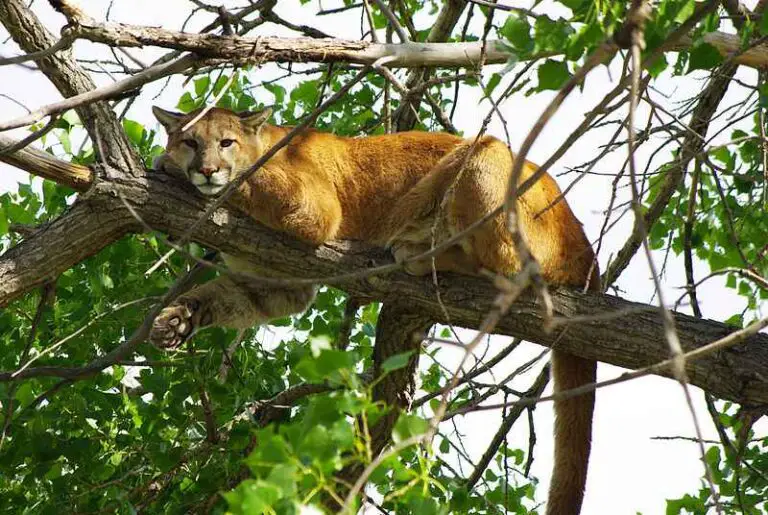Coyote Vs Dog Tracks, Size, Weight, Overall Comparison
Coyotes, as canines genetically related to wolves and domesticated dogs, share a complex relationship with their domestic counterparts. In general, coyotes exhibit a sleeker appearance compared to domesticated dogs, characterized by a flatter forehead and a more pointed snout. Coyotes often present with longer legs, while dogs typically have deeper chests.
This article comprehensively compares coyotes and dogs, exploring factors such as taxonomy, appearance, size, weight, bite force, physical offensive and defensive advantages, speed, agility, overall physical capacity, habitat preferences, lifespan, feeding habits, social behavior, reproduction methods, parental behavior, proximity to human-inhabited areas, behavior toward humans, danger posed to humans, associated precautions, and conservation status.
Coyote Vs Dog: Who Will Win in a Fight/Physical Confrontation?
In a one-on-one scenario, a large dog is likely to emerge victorious over a single coyote due to its larger size, greater weight, and superior strength. However, it’s crucial to acknowledge that coyotes can pose a threat to small dogs and, when in large numbers, may use their collective strength to overpower larger dogs.
Why a Large Dog Will Win a Single Coyote in a Fight/Physical Confrontation
I). Significant Size, Weight, and Strength Advantage:
– Large dogs, being larger, heavier, and stronger than individual coyotes, hold a distinct advantage in physical confrontations, enabling them to overpower and dominate their smaller adversaries.
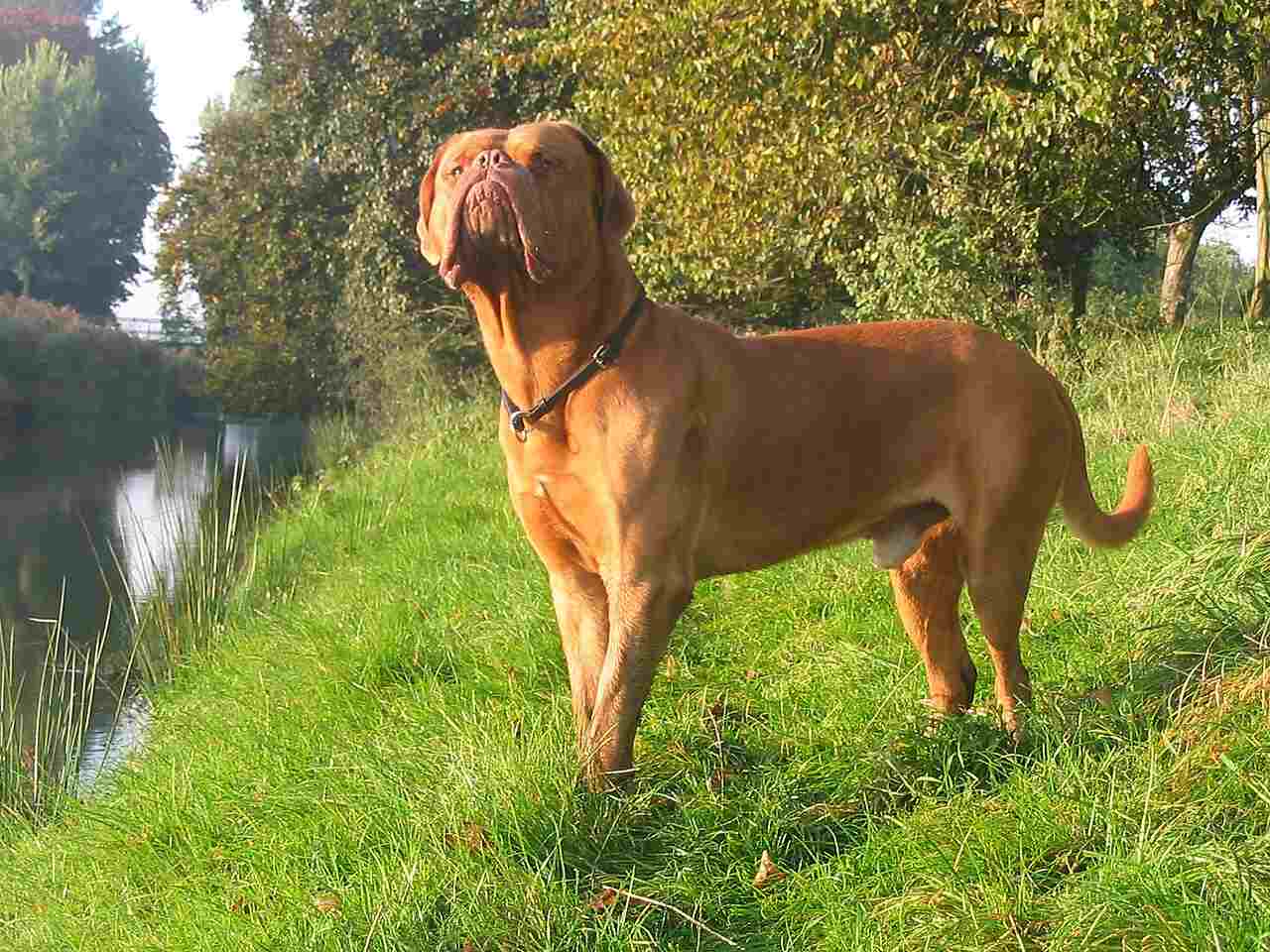
Coyote’s Threat to Small Dogs or in Large Numbers
– Threat to Small Dogs:
– Coyotes, despite being individually smaller than large dogs, can pose a threat to small dogs. Their agility and predatory instincts make them capable of taking on smaller canine counterparts.
– Strength in Numbers:
– In situations where coyotes gather in large numbers, they may use their collective strength to overpower larger dogs. The pack mentality and coordinated efforts can potentially pose a challenge even for more substantial individual dogs.
*Details of Comparison
| Aspect | Coyote | Dog |
| Taxonomy | Canidae family, Canis genus, C. latrans |
Canidae family, Canis genus, C. lupus familiaris
|
| Appearance | Slender, bushy tail, pointed features |
Diverse based on breeds, influenced by breeding
|
| Size | Generally smaller |
Varies widely, from tiny to large breeds
|
| Weight | 20-50 pounds |
Varies widely among breeds
|
| Bite Force | Adapted for prey capture |
Varies among breeds, influenced by size
|
| Offensive Advantages | Specialized for hunting |
Varied based on breed and purpose
|
| Defensive Advantages | Agile with natural instincts |
Varied, some breeds may have protective instincts
|
| Speed | Up to 40 mph in short bursts |
Varies widely among breeds, some comparable
|
| Agility | Highly agile for hunting pursuits |
Varies, some breeds agile for specific activities
|
| Overall Physical Capacity | Balanced for speed, endurance, hunting |
Diverse based on breed and human influence
|
| Habitat Preference(s) | Versatile, adapts to various habitats |
Adapts to urban, suburban, rural environments
|
| Tracks | Distinctive, smaller than dog tracks |
Vary widely based on breed, size, and shape
|
| Lifespan | 10-14 years in the wild |
Varies widely, influenced by breed and size
|
| Feeding | Carnivorous, opportunistic |
Varied diet, influenced by human care and diet
|
| Social Behavior | Complex structures, family groups |
Varied, influenced by breed, training, and nature
|
| Reproduction | Monogamous during breeding season |
Variable breeding patterns, influenced by humans
|
| Parental Behavior | Cooperative in raising offspring |
Varies, some breeds may exhibit strong instincts
|
| Proximity to Humans | Adaptable to urban areas |
Domesticated, often kept as pets near humans
|
| Behavior Toward Humans | Generally wary, rare aggression |
Varies widely based on breed, training, and nature
|
| Danger Posed to Humans | Rare attacks, often non-threatening |
Potential risks, dependent on individual behavior
|
| Precautions | Secure garbage, avoid feeding wildlife |
Responsible pet ownership, breed-specific care
|
| Conservation Status | Least concern globally |
Not subject to conservation assessments
|
Key Points
*Similarities:
Shared ancestry within Canidae family and Canis genus.
Adaptive capabilities for diverse habitats.
Ability to exhibit social behaviors.
*Differences:
Coyotes are wild, with a standardized ecological role; domestic dogs display immense diversity.
Coyotes exhibit behaviors crucial for survival; domestic dogs’ behaviors are shaped by varied roles.
1. Taxonomy
Coyote (Canis latrans): Belongs to the Canidae family and Canis genus. Species name “latrans” refers to its vocalizations.
Dog (Canis lupus familiaris): Also part of the Canidae family and Canis genus, with the subspecies “familiaris” denoting domestication.
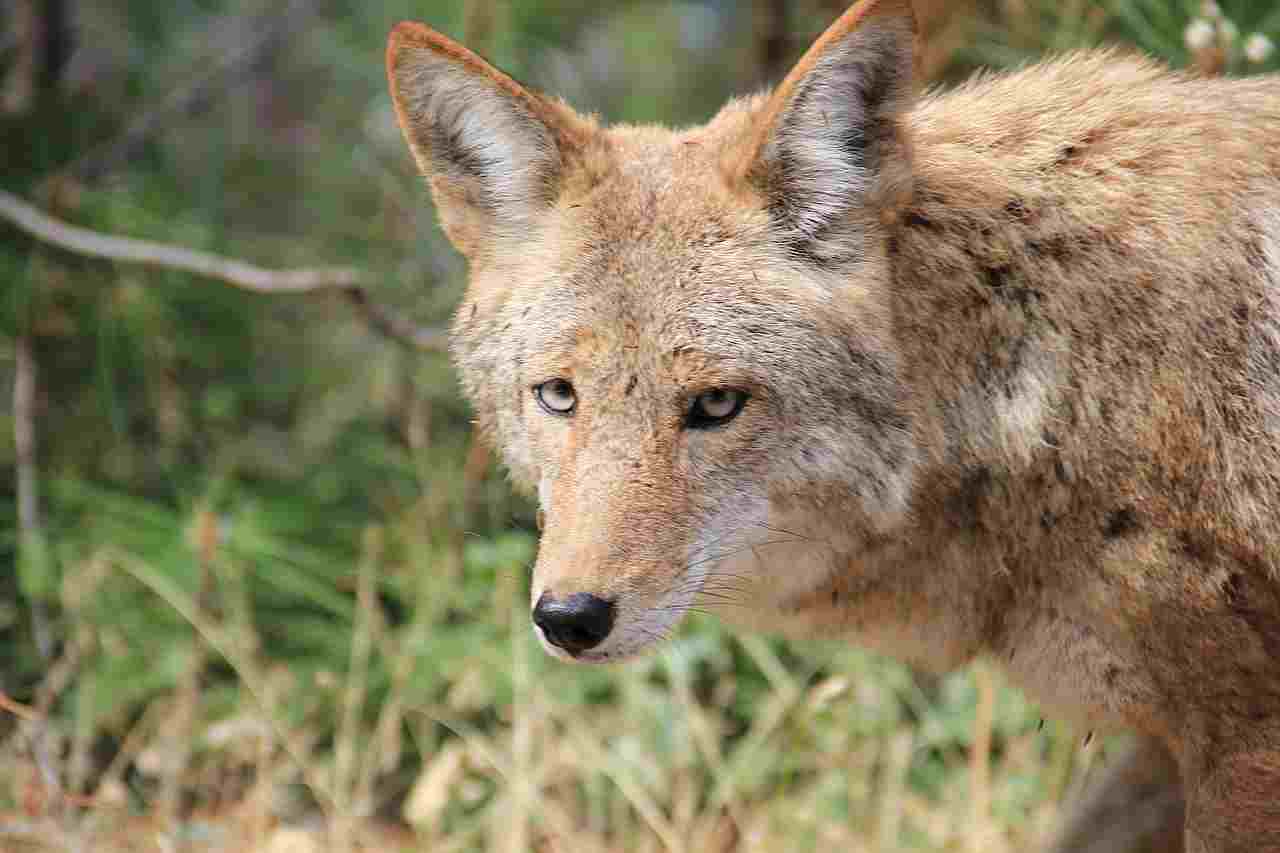
CC BY 2.0.)
2. Appearance
Coyote:
Typically has a slender build with a bushy tail, pointed ears, and a straight, pointed muzzle.
Fur coloration varies from grayish-brown to yellowish-gray, often with a reddish tint.
Well-adapted for camouflage in diverse habitats.
Dog:
Wide range of appearances due to extensive breeding, from small lap dogs to large working breeds.
Ears, tails, coat color, and patterns vary significantly among different breeds.
Domestic dogs often display features adapted for specific roles, influenced by human selection.
Comparison:
Both share a common ancestry and exhibit morphological diversity.
Coyotes display a more consistent natural appearance adapted to their wild environment, while dogs showcase extensive human-guided variations.
3. Size
Coyote:
Generally smaller than most domestic dog breeds.
Adult coyotes typically have a body length of 3.3 to 4.5 feet and a height at the shoulder of 21 to 24 inches.
Dog:
Varies widely in size depending on the breed, ranging from tiny toy breeds to large working breeds.
Heights at the shoulder can range from a few inches to over two feet.
Comparison:
Coyotes are generally smaller than larger dog breeds but can be similar in size to smaller breeds.
4. Weight
Coyote:
Adult coyotes weigh between 20 to 50 pounds, with males typically being larger than females.
Dog:
Domestic dog weights vary significantly based on breed, ranging from a few pounds to well over 100 pounds for giant breeds.
Comparison:
The weight of coyotes falls within the range of small to medium-sized domestic dog breeds.
5. Bite Force
Coyote:
The bite force of a coyote is adapted for capturing and consuming prey, but specific measurements may vary.
Dog:
Bite force in dogs varies widely among breeds, with larger breeds generally exerting more force due to their size and jaw strength.
Comparison:
Both coyotes and dogs have versatile bite forces suited to their ecological roles, with variations based on size, diet, and evolutionary adaptations.
6. Physical Offensive Advantages
Coyote:
Sharp teeth and strong jaws for capturing and consuming prey.
Well-adapted for hunting small to medium-sized mammals and birds.
Dog:
Varied offensive capabilities depending on breed and purpose, such as herding instincts, speed, or strength.
Comparison:
Coyotes are specialized for hunting in the wild, while domestic dogs may possess offensive traits tailored to specific roles or tasks.
7. Physical Defensive Advantages
Coyote:
Agile and can use their speed to escape from predators.
Sharp claws and teeth as defensive tools.
Dog:
Defensive capabilities vary among breeds; some may have protective instincts, while others rely on humans for defense.
Comparison:
Coyotes and dogs both use agility and defensive mechanisms, but coyotes, as wild animals, often rely more on natural instincts for survival.
8. Speed
Coyote:
Agile and capable of reaching speeds up to 40 mph in short bursts.
Dog:
Speed varies widely among breeds, with some breeds excelling in agility and speed, reaching comparable speeds to coyotes.
Comparison:
While coyotes are naturally adapted for speed in the wild, certain dog breeds can exhibit similar or even superior agility and speed, particularly those bred for athleticism.
9. Agility
Coyote:
Highly agile and able to navigate various terrains with ease.
Well-adapted for quick directional changes during hunting pursuits.
Dog:
Agility varies among breeds; some are highly agile for activities like agility trials, while others may have a more sturdy build.
Comparison:
Both coyotes and dogs exhibit agility, but coyotes’ agility is finely tuned for survival in the wild, while dogs may showcase agility based on specific breeding or training.
10. Overall Physical Capacity
Coyote:
Well-balanced physique, adapted for a combination of speed, endurance, and predatory skills.
Dog:
Physical capacity varies widely among breeds, reflecting the diverse roles they play, from working and hunting to companionship.
Comparison:
Coyotes possess a more standardized overall physical capacity suited for a wild, predatory lifestyle, while domestic dogs showcase diverse capacities shaped by human influence and breeding.
11. Habitat Preference(s)
Coyote:
Versatile habitat adaptability, ranging from forests and grasslands to urban areas.
Typically avoid dense forests and high mountainous regions.
Dog:
Domestic dogs adapt to a wide range of habitats, including urban, suburban, and rural environments.
Their habitat preference often aligns with human settlement patterns.
Comparison:
Both coyotes and dogs display adaptability to various habitats, but dogs’ habitat preference is more influenced by human companionship and settlements.
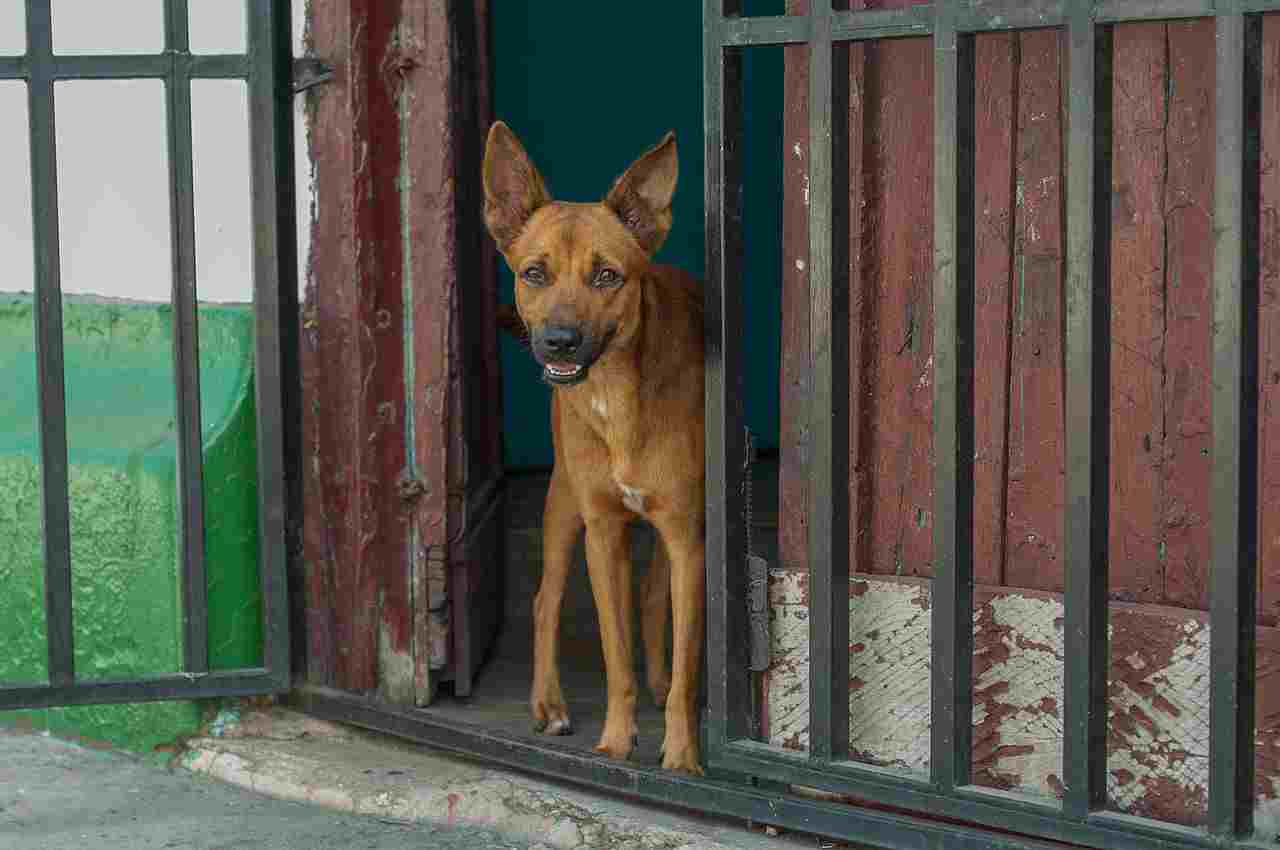
12. Tracks
Coyote:
Distinctive tracks with four toe pads and claw marks; overall oval-shaped.
Typically smaller than domestic dog tracks.
Dog:
Tracks vary based on breed, but generally, dog tracks exhibit larger variations in size and shape.
The number of toe pads and claw imprints also depends on the dog’s breed and size.
Comparison:
While both leave distinct tracks, coyote tracks are often more uniform and smaller, while dog tracks can vary significantly in size and shape.
13. Lifespan
Coyote:
In the wild, typically lives 10-14 years, although factors like predation, disease, and food availability influence lifespan.
Dog:
Lifespan varies greatly among breeds, with smaller breeds often living longer (12-16 years) than larger breeds (8-12 years on average).
Comparison:
Domestication has led to a broader range of lifespans in dogs, influenced by size, breed, and living conditions, whereas coyotes generally have a more consistent lifespan in the wild.
14. Mode of Feeding
Coyote:
Primarily carnivorous, with a diet consisting of small mammals, birds, insects, and fruits.
Opportunistic feeders that can adapt their diet based on availability.
Dog:
Varied diet depending on breed, with domestic dogs often consuming commercial dog food, meat, and vegetables.
Dogs may exhibit omnivorous tendencies based on their diet and availability of food.
Comparison:
Both coyotes and dogs are adaptable in their feeding habits, but coyotes, as wild animals, rely more on a carnivorous diet shaped by their natural environment.
15. Social Behavior
Coyote:
Generally display complex social structures, often forming family groups or packs.
Cooperative hunting and communal care for pups are common social behaviors.
Dog:
Social behavior varies widely, influenced by breed, training, and domestication.
Domestic dogs can exhibit pack behavior or may prefer solitary lifestyles depending on their ancestry and individual temperament.
Comparison:
Both coyotes and dogs can display social behaviors, but coyotes’ social structures are more consistent and essential for survival in the wild, while domestic dogs’ social behavior is diverse and influenced by human interaction.
16. Mode of Reproduction
Coyote:
Typically monogamous during the breeding season.
Mating pairs may stay together for several years, cooperating in raising offspring.
Dog:
Breeding patterns vary widely among domestic dogs.
Breeding decisions are often influenced by human intervention, with some breeds having controlled breeding for specific traits.
Comparison:
Both coyotes and dogs have variable reproductive patterns, but domestic dogs’ breeding is heavily influenced by human decisions and preferences.
17. Parental Behavior
Coyote:
Both parents actively participate in raising pups, sharing responsibilities like hunting and protecting the den.
Cooperative parental behavior contributes to the survival of the offspring.
Dog:
Parental behavior varies; some breeds and individual dogs may exhibit strong parental instincts, while others may require human assistance in raising pups.
Comparison:
Coyotes generally exhibit more consistent and cooperative parental behavior, crucial for the survival of their offspring, while domestic dogs’ parental behavior can vary widely based on breed and individual characteristics.
18. Proximity to Human-Inhabited Areas
Coyote:
Increasingly adaptable to urban environments, especially in regions where natural habitats overlap with human settlements.
May come into close proximity to residential areas in search of food.
Dog:
Domestic dogs are closely associated with human-inhabited areas, often living as pets in households or working alongside humans in various capacities.
Comparison:
While both coyotes and dogs can be found in proximity to human-inhabited areas, domestic dogs are intentionally kept as companions, whereas coyotes may enter urban environments due to ecological changes.
19. Behavior Toward Humans
Coyote:
Generally wary of humans but may exhibit bolder behavior, especially in areas with habituation to human presence.
Rare instances of aggression, often linked to protecting territories or young.
Dog:
Behaviors vary widely based on breed, training, and individual temperament.
Domestic dogs can range from highly social and friendly to wary or protective.
Comparison:
Both coyotes and dogs may exhibit a range of behaviors toward humans, but domestic dogs are more likely to have positive interactions due to their history of domestication.
20. Danger Posed to Humans
Coyote:
Generally pose minimal danger to humans; attacks are rare but can occur, especially in circumstances where coyotes become habituated to human presence.
Most interactions involve avoidance, and conflicts often arise due to misunderstandings or food-related incidents.
Dog:
Domestic dogs, in general, are not considered a significant threat to humans, but certain breeds may pose risks if not properly trained or socialized.
Incidents are often linked to individual behavior, health, or environmental factors.
Comparison:
While both coyotes and dogs have the potential to pose risks in specific situations, attacks are infrequent, and most interactions are non-threatening. Education and responsible ownership are crucial in minimizing risks associated with both species.
21. Associated Precautions
Coyote:
Residents in areas with coyote presence are often advised to secure garbage, avoid feeding wildlife, and supervise small pets to minimize potential conflicts.
Encouraging coexistence through public education is a common approach.
Dog:
Responsible pet ownership involves leash control, proper training, and vaccinations.
Breed-specific considerations may include understanding temperament, exercise needs, and potential health issues.
Comparison:
Precautions for coyotes focus on minimizing conflicts in shared habitats, while dog-related precautions revolve around responsible ownership and breed-specific considerations.
22. Conservation Status
Coyote:
Generally not a conservation concern; coyotes are adaptable and have expanded their range due to habitat changes.
Considered a species of least concern globally.
Dog:
Domestic dogs are not subject to conservation status assessments as they are not wild species.
Various breeds may face specific health concerns, but these are addressed through responsible breeding practices.
Comparison:
Coyotes are considered a wildlife species subject to conservation assessments, while dogs, as domesticated animals, are managed through breeding programs and veterinary care rather than conservation measures.
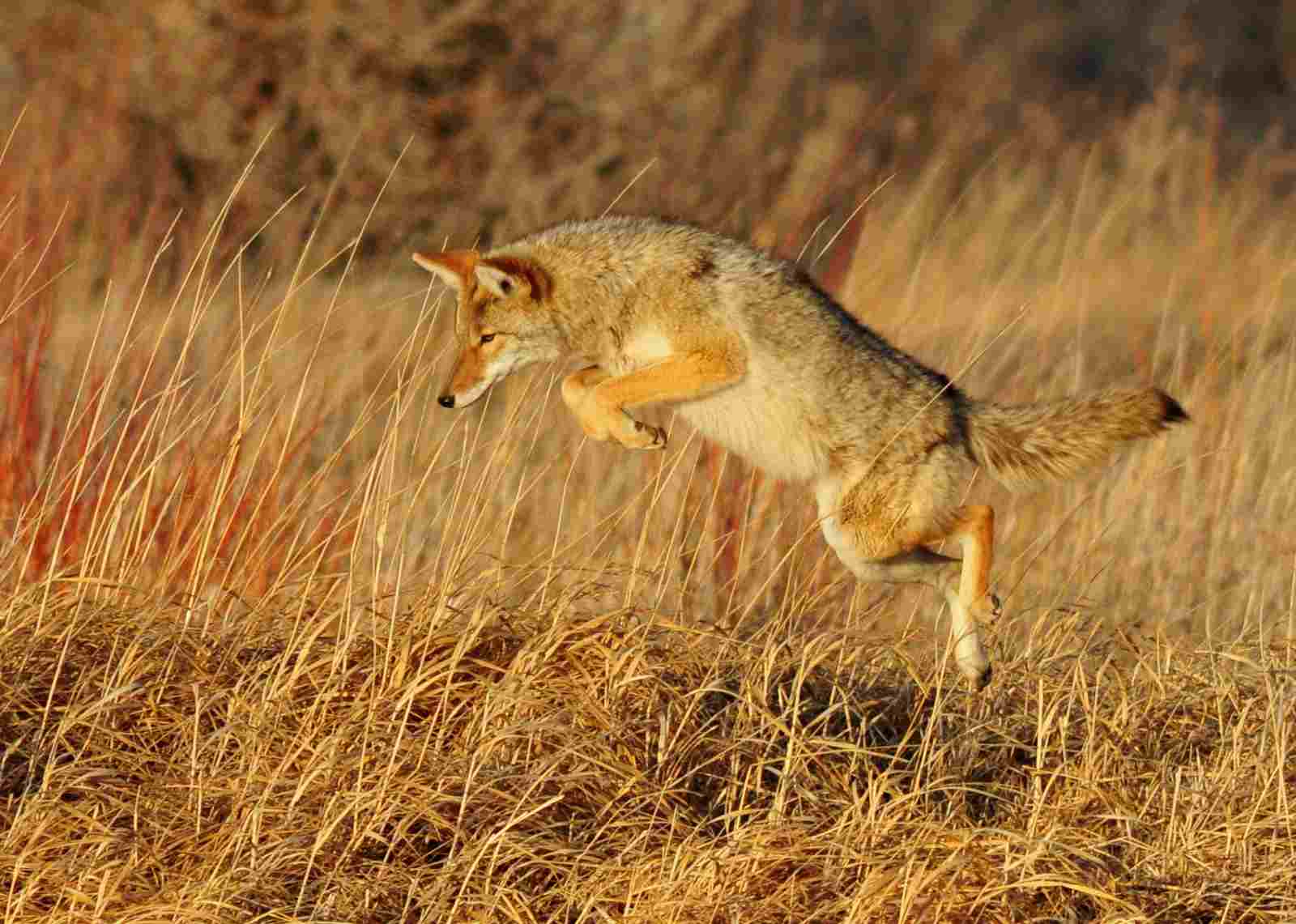
Conclusion
I). Similarities:
Shared ancestry within the Canidae family and Canis genus.
Adaptive capabilities for diverse habitats.
Ability to exhibit social behaviors.
II). Differences:
Coyotes are wild, with a standardized ecological role, while domestic dogs display immense diversity based on breeding and human influence.
Coyotes exhibit specific behaviors crucial for survival in the wild, while domestic dogs’ behaviors are shaped by varied roles, including companionship, work, and recreation.
